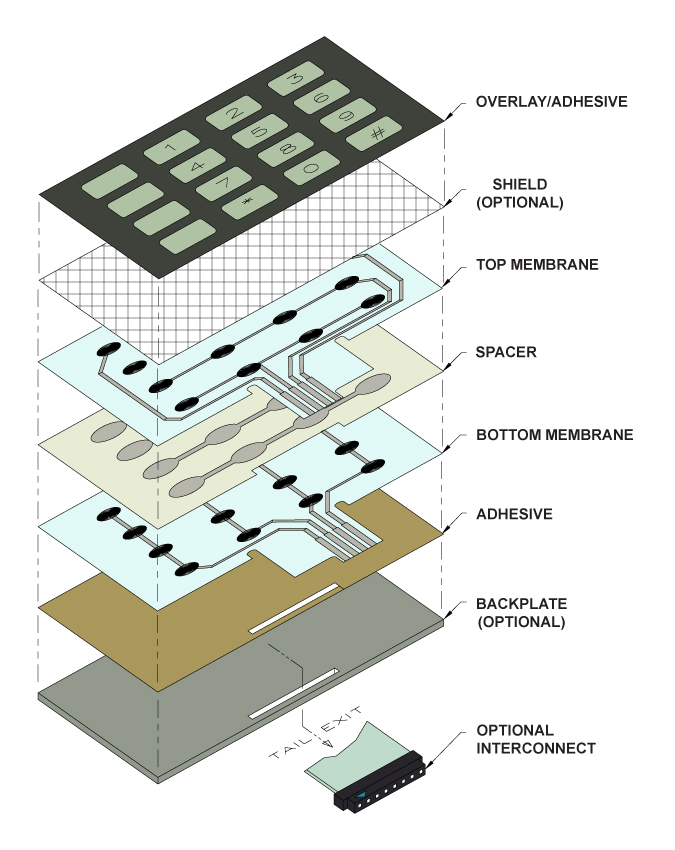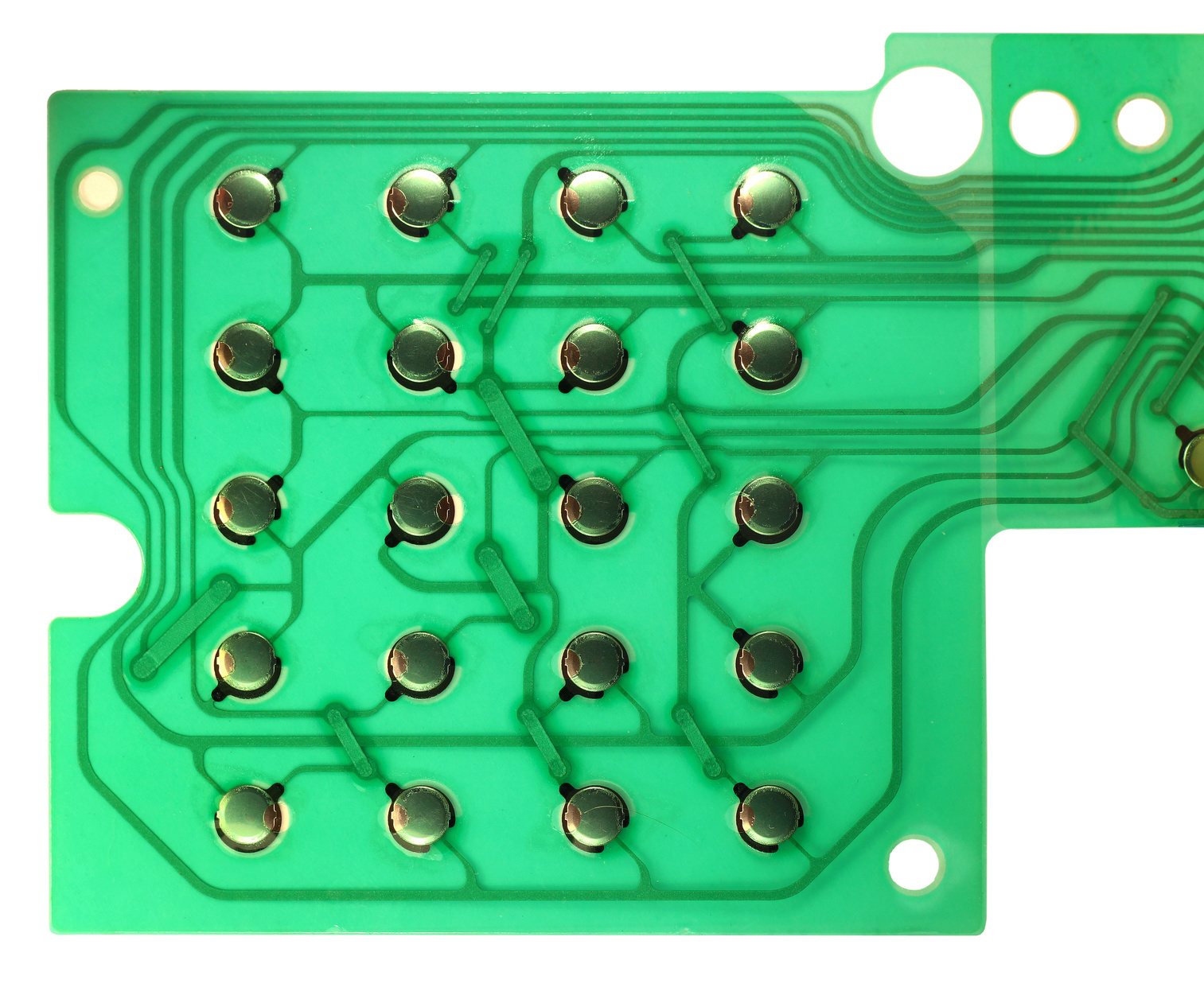Secret Benefits of Using a Membrane Switch in Industrial Applications
Secret Benefits of Using a Membrane Switch in Industrial Applications
Blog Article
Comprehending the Performance of Membrane Changes for User Interface Devices
The performance of membrane changes represents a significant advancement in individual interface layout, incorporating performance with aesthetic convenience. These buttons operate via a multi-layered structure that converts individual communications into electrical signals, enabling both compact designs and resilience versus environmental aspects. As markets significantly prioritize customer experience, understanding the subtleties of membrane layer button technology ends up being vital. What ramifications do these innovations hold for future applications, and just how might they redefine user interactions throughout different gadgets?
What Are Membrane Layer Switches?
Membrane switches are ingenious user interface devices that facilitate individual interaction with digital tools. These functional components contain multiple layers, consisting of a visuals overlay, spacer, and a published circuit layer. The design enables a smooth combination into various digital devices, improving both the aesthetic and useful elements of interface.
Membrane layer buttons are typically used in a broad range of applications, from home appliances to commercial machinery and medical devices. Their building and construction usually includes a slim profile, making them a suitable option for small styles. The responsive feedback provided by these buttons can be engineered to meet certain customer choices, ensuring efficient interaction in between the individual and the device.
Toughness is one more substantial advantage of membrane buttons, as they are resistant to dirt, wetness, and chemicals, which improves their lifespan popular environments. Furthermore, these switches can be tailored in terms of form, size, and visuals layout, enabling branding and user-specific attributes. Overall, membrane switches represent a useful solution for enhancing user experience in electronic gadgets, integrating functionality with aesthetic charm in an effective way.
Exactly How Membrane Switches Over Job
Operating on a straightforward principle, membrane changes utilize a layered building to register user input effectively. Each button contains numerous layers, including a printed circuit layer, a spacer layer, and a top graphic layer, which are made to collaborate perfectly. When a customer presses the top layer, it compresses the spacer layer, bringing the conductive components of the circuit layer right into call with each other.
This get in touch with develops a closed circuit, signifying the gadget to implement a specific feature. The layout permits different configurations, consisting of tactile comments, which can boost the user experience by giving a physical sensation upon activation. The products made use of in membrane buttons commonly include versatile substrates, such as polyester or polycarbonate, which ensure toughness and resilience versus deterioration.

Key Benefits of Membrane Layer Buttons

One more considerable benefit is their compactness. Membrane layer buttons are thin and light-weight, which allows producers to save room in their devices without giving up capability. This feature is especially useful in applications where weight and volume are critical considerations.
In addition, membrane buttons are immune to dirt, wetness, and chemicals, improving their sturdiness. This strength expands their lifespan and decreases the need for constant replacements, causing expense financial savings gradually.
Furthermore, the tactile feedback offered by membrane buttons can be enhanced to enhance customer interaction. They can consist of attributes such as increased buttons or audible clicks, boosting functionality and customer experience.
Applications Throughout Industries
Interface gadgets making use of membrane buttons are widespread in a vast selection of industries, showcasing their adaptability and functionality. Membrane Switch. In the medical industry, membrane layer buttons are integral to gadgets such as analysis tools and client tracking systems, where their resilience and ease of cleansing are critical for preserving hygiene requirements. In the automotive sector, these switches look what i found are employed in control panel controls and infotainment systems, offering a smooth and modern-day interface for individuals.
Furthermore, the customer electronics market gain from membrane layer buttons in devices and handheld gadgets, where portable layout and easy to use user interfaces improve user experience. Industrial applications additionally utilize membrane switches for control board in machinery and automation systems, stressing their toughness and resistance to extreme environments.
In the aerospace and defense markets, membrane switches are utilized in cabin controls and tools, where dependability and performance under extreme problems are vital. Additionally, the pc gaming market increasingly incorporates membrane layer switches in controllers and game makers, adding to an appealing customer experience. Generally, the flexibility of membrane layer switches over allows their extensive usage across many industries, highlighting their relevance in modern-day interface style.
Future Patterns in Membrane Layer Switch Over Technology

Additionally, the usage of advanced materials, such as polycarbonate and polyester movies, is anticipated to climb, offering improved durability and resistance to ecological stressors. These products add to the general durability of membrane layer buttons, making them appropriate for harsher industrial applications.
Furthermore, the consolidation of wise innovation, including IoT connection, will certainly enable membrane buttons to communicate with other tools and systems, assisting in a more interactive user experience. This fad aligns with the expanding need for smart devices throughout different fields, from healthcare to consumer electronic devices.
Last but not least, modification choices are prepared for to increase, enabling suppliers to create bespoke options tailored to particular customer demands and choices. These developments will certainly position membrane buttons as vital parts in the development of user interface technology.
Final Thought
In verdict, membrane switches over go represent a critical advancement in customer interface innovation, supplying a trustworthy and versatile remedy for diverse electronic applications. As innovations in material science and touch picking up technologies continue, the functionality and applicability of membrane buttons are anticipated to broaden, reinforcing their relevance in modern electronic devices.
Report this page